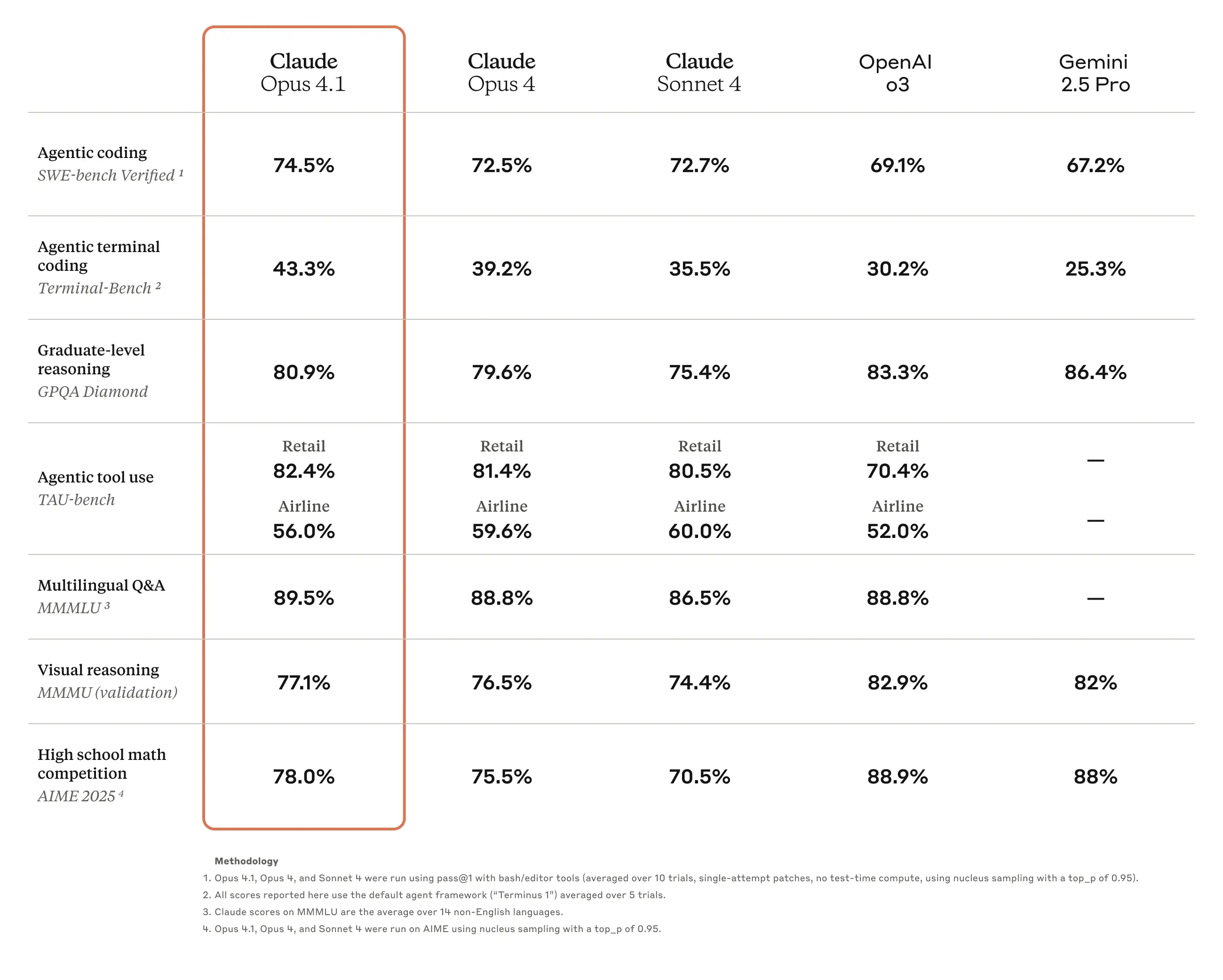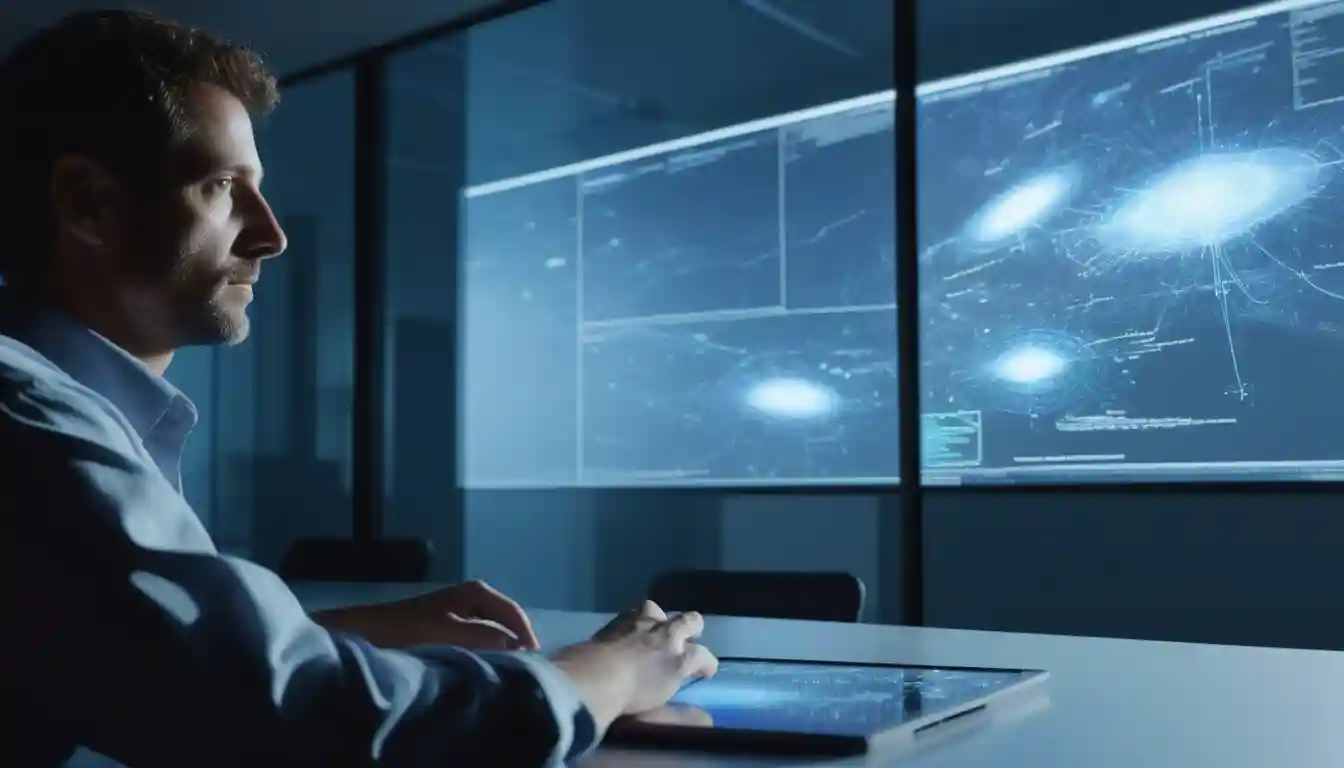The Code Whisperer: How AI Just Crossed Silicon Valley's Most Dangerous Threshold
REDWOOD CITY, California — The notification arrived at 3:47 AM, Pacific Time. In the span of eleven minutes, an artificial intelligence system had identified, isolated, and corrected a critical bug that had plagued a Fortune 500 company's payment processing system for weeks—a task that had consumed dozens of engineering hours and threatened millions in transaction revenue.
This wasn't a demonstration or a controlled test. This was Claude Opus 4.1, Anthropic's latest AI system, operating in the wild depths of enterprise software where mistakes cascade into financial catastrophe and precision determines profit margins.
Released today, Claude Opus 4.1 represents more than technological advancement—it marks the crossing of a threshold that technology leaders have both anticipated and dreaded. For the first time, an artificial intelligence system demonstrates the surgical precision and contextual awareness to compete directly with mid-level software engineers on complex, real-world coding tasks.
The implications ripple through every corner of the technology economy: from workforce dynamics to investment strategies, from corporate valuations to the fundamental cost structure of innovation itself.
"We're witnessing the emergence of AI capabilities that genuinely threaten to reorganize entire sectors of knowledge work," observed a senior technology analyst at a prominent investment firm, speaking on condition of anonymity due to client relationships. "The question is no longer whether AI can assist human programmers, but whether human programmers can justify their cost premium over AI systems."
The Precision Revolution
At its core, Claude Opus 4.1's breakthrough lies not in raw computational power but in something approaching engineering intuition. The system achieves 74.5% accuracy on SWE-bench Verified, a benchmark that measures real-world software engineering capability—a performance level that places artificial intelligence within striking distance of human developers who have trained for years to achieve similar proficiency.
More significantly, early enterprise deployments reveal the system's ability to perform what engineers describe as "surgical debugging"—making precise modifications to complex codebases without introducing the cascading errors that have historically justified substantial development teams.
In corporate offices across Silicon Valley, development managers are quietly recalculating project timelines and budget allocations. At companies like Rakuten, where software architectures span millions of lines of code, Claude Opus 4.1's enhanced capabilities have produced measurable improvements in debugging workflows that translate directly to operational cost savings.
"The mathematics are compelling," explained a technology sector portfolio manager at a major institutional investor. "When you consider that debugging and code maintenance consume approximately 23% of enterprise software development budgets, even modest improvements in AI capability justify substantial technology investments."
The economic transformation extends beyond immediate cost considerations. As AI demonstrates increasing autonomy in complex cognitive tasks, traditional assumptions about the defensibility of knowledge-based business models face fundamental challenge.

The Agentic Advantage
Perhaps most significantly, Claude Opus 4.1's enhanced "agentic" capabilities—its ability to manage multi-step workflows with minimal human oversight—position it at the forefront of a broader automation trend that could reshape enterprise operations across multiple sectors.
Unlike traditional AI tools that require constant human guidance, Claude Opus 4.1 can maintain contextual awareness across extended project workflows, conduct comprehensive research, and execute complex problem-solving chains autonomously. Early adopters report enabling what they describe as "just-in-time engineering"—AI-driven development cycles that move as rapidly as ideas are conceived.
"Agentic capabilities represent a qualitative shift in AI utility," noted a technology strategist at a leading consulting firm. "We're moving from AI as a powerful tool to AI as something approaching a digital colleague—with immediate implications for organizational structure and competitive dynamics."
The broader market implications extend well beyond software development. As AI systems demonstrate increasing capability in complex cognitive tasks, investors are beginning to reassess fundamental assumptions about which business models remain defensible in an increasingly automated economy.
Market Dynamics and Strategic Positioning
Anthropic's pricing strategy reveals sophisticated market positioning that extends beyond immediate revenue considerations. By maintaining unchanged pricing from Claude Opus 4 while delivering measurable performance improvements, the company signals confidence in its competitive moat—a strategic choice that influences how enterprise customers evaluate AI infrastructure investments throughout the sector.
The timing proves particularly significant. As technology companies face mounting pressure to demonstrate artificial intelligence return on investment amid tightening capital markets, Claude Opus 4.1's demonstrable improvements in software engineering productivity offer tangible justification for continued AI infrastructure spending.
Industry observers note that the model's simultaneous availability across multiple cloud platforms—Amazon Bedrock, Google Cloud's Vertex AI, and Anthropic's direct API—reflects the strategic importance of AI accessibility in current enterprise markets. This multi-platform approach suggests that AI adoption may accelerate more rapidly than previous technology transitions.
"The infrastructure requirements for these advanced AI systems create compelling investment opportunities across the entire technology stack," observed a senior analyst covering cloud computing markets. "From semiconductor manufacturers to data center operators, the economic ripple effects are substantial and immediate."
Cloud infrastructure companies stand to benefit substantially from increased AI model deployment, as systems like Claude Opus 4.1 require significant computational resources. Market analysts project that enterprise AI infrastructure spending could increase by 40-60% over the next eighteen months, driven primarily by adoption of advanced language models with agentic capabilities.
Workforce Transformation Accelerates
The human implications prove equally profound. Early feedback from development teams suggests that Claude Opus 4.1's capabilities may accelerate the ongoing compression of traditional software engineering career trajectories. Rather than simply replacing developers, the system appears to elevate baseline skill requirements while enabling existing teams to manage significantly more complex projects.
"We're seeing fundamental changes in what constitutes valuable human contribution to software development," explained a human resources executive at a major technology company. "The skills required for entry-level positions are shifting upward rapidly, while senior roles increasingly focus on system architecture and AI collaboration rather than implementation."
This transformation aligns with broader labor market dynamics in the technology sector, where demand for senior engineering talent continues to outpace supply while opportunities for junior developers face increasing competition from AI automation.
The implications extend beyond individual career paths to fundamental questions about talent development and educational preparation in technical fields. As AI systems demonstrate increasing capability in routine programming tasks, the premium on uniquely human skills—creative problem-solving, system design, cross-functional collaboration—continues to grow.
Investment Implications and Future Outlook
For institutional investors, Claude Opus 4.1's release underscores several emerging themes that may define technology markets over the coming quarters. Companies demonstrating clear AI integration strategies may command premium valuations, while those lagging in AI adoption could face increased operational costs and competitive pressures.
The subscription-based revenue model underlying advanced AI services presents particularly attractive characteristics for technology investors, offering predictable cash flows and high switching costs once enterprises integrate these systems into core workflows.
Market analysts suggest several investment themes warrant consideration: cloud infrastructure providers positioned to benefit from increased AI computational demand, enterprise software companies with clear AI integration strategies, and semiconductor manufacturers supporting expanding AI computational requirements.
However, the rapid pace of AI development introduces significant uncertainty regarding competitive positioning and technological obsolescence risks. Anthropic's promise of "substantially larger improvements" in coming weeks suggests that the current AI capability landscape remains highly dynamic.
"The velocity of AI advancement creates both tremendous opportunities and significant risks," cautioned a portfolio manager specializing in technology investments. "Investors must balance exposure to this transformative trend while maintaining awareness of the inherent volatility in rapidly evolving markets."
The Threshold Crossed
As enterprises begin integrating Claude Opus 4.1 into operational workflows, the true measure of its impact will emerge in quarterly productivity metrics and software development cost structures across the technology sector.
The early indicators suggest that this release may represent a critical inflection point in AI's practical application to enterprise software development. Unlike previous technological advances that enhanced human capability, Claude Opus 4.1 demonstrates the potential to fundamentally alter the economic equation of knowledge work itself.
In the quiet hours before dawn, while Silicon Valley prepares for another day of innovation and disruption, artificial intelligence systems are writing code with increasing sophistication and decreasing human oversight. The transformation they represent extends far beyond corporate campuses into the fundamental structure of the modern economy—a threshold crossed in the early morning darkness, with implications that will reshape entire industries in the light of day.
Fact Sheet of Claude Opus 4.1
| Category | Details |
|---|---|
| Release Date | August 5, 2025 |
| Key Improvements | - Enhanced agentic tasks, real-world coding, and reasoning - 74.5% accuracy on SWE-bench Verified (vs. 72.5% for Opus 4) - Better multi-file refactoring & precise debugging - Improved detail tracking & agentic search for research/data analysis - 1 standard deviation gain in junior developer benchmarks over Opus 4 |
| Benchmarks (No Extended Thinking) | SWE-bench Verified, Terminal-Bench |
| Benchmarks (Extended Thinking, up to 64K tokens) | TAU-bench, GPQA Diamond, MMMLU, MMMU, AIME |
| Availability | - Paid Claude users & Claude Code - Via API, Amazon Bedrock, Google Cloud Vertex AI |
| Pricing | Unchanged from Opus 4 |
| User Feedback | - Pros: Better multi-file refactoring, surgical debugging, agentic search - Cons: Seen as incremental over Opus 4; no context window/token budget increase - Mixed comparisons vs. GPT-4.1 (Claude lags in ambiguity resolution) |
| Enterprise Impact | - Faster software delivery, reduced errors, improved code quality - Used by Rakuten, Windsurf for large codebases |
| Future Updates | "Substantially larger improvements" expected in coming weeks |
| Related Resources | System Card, Model Pages, Pricing |
NOT INVESTMENT ADVICE
